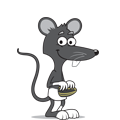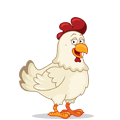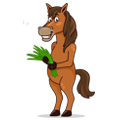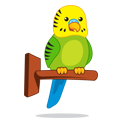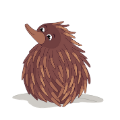Rabbits are prey animals - they need to hide from things that scare them. Providing hiding places allows them to do this, helping them feel safe.
Rabbits tend to hide if feeling afraid, stressed, unwell or when they are wanting to have a break from social contact with other rabbits or people.
It is really important that you provide constant access to hiding places within your rabbits’ home. This allows your rabbits to escape and hide (natural behaviour) and feel safe and reassured.
Hiding places should be provided in addition to your rabbits' main shelter.
Position your rabbits’ hiding places in areas free from the sights and smells of potential predators, e.g. cats, dogs, ferrets, stoats, weasels and birds of prey. Locate them away from draughts, out of direct sunlight and in a quiet area.
Your rabbits’ hiding places should be high enough for your rabbits to quickly move underneath, but low enough to give them a feeling of safety. If your rabbits can jump onto them, they can function as platforms too!
Remember – hiding places are your rabbits’ safe places, it’s where they will go to escape and feel calmer. Never trap or remove your rabbits from them. Provide at least one hiding place for each of your rabbits, so all of them can hide at the same time if they want to. You could also provide at least one bigger hiding place large enough for all rabbits to rest together.
Ensure your rabbits’ hiding places have two entrances/exits. This will prevent your bossiest rabbit becoming territorial/aggressive and blocking others inside.
If you keep different sized rabbits together, ensure at least one hiding place has an entrance large enough for the smaller rabbit, but too small for the larger rabbit, to enter. This ensures smaller rabbits can escape from their larger companion if they ever feel bullied and need a break.
If rabbits use hiding places regularly or are hiding for lots of time, ask your veterinarian for advice - they may be unwell, stressed or frightened. Your veterinarian will rule out illness or injury that could cause the problem behaviour.






